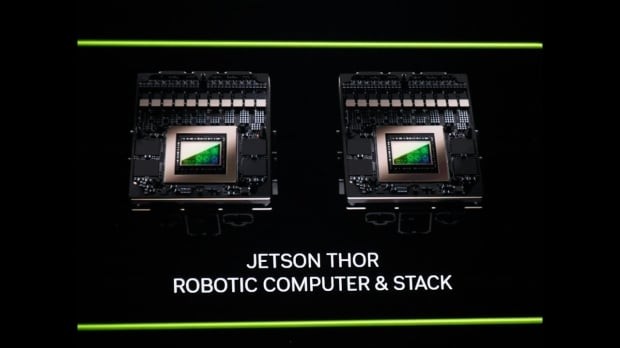
Nvidia, the tech giant valued at over $3 trillion, is making an ambitious push into robotics with its upcoming Jetson Thor platform, scheduled for release in the first half of 2025. The company sees robotics as its next major growth driver as competition intensifies in the AI chip market.
The new Jetson Thor is a compact but powerful computer specifically designed for humanoid robots, capable of delivering 2,000 teraflops of processing power. This specialized hardware aims to handle complex AI tasks like real-time object recognition, natural language processing, and autonomous navigation.
"This is the ChatGPT moment for physical AI and robotics," says Deepu Talla, Nvidia's VP of robotics. Rather than competing directly with robot manufacturers like Tesla and Figure AI, Nvidia plans to provide OEM services and essential tools to robotics developers worldwide.
The company's robotics strategy builds on its existing strengths in AI training and simulation. Nvidia's comprehensive technology stack includes DGX systems for AI model training and the Omniverse platform for creating digital twins - virtual replicas used to test and refine robotic systems.
The timing appears strategic, as the global robotics industry is projected to reach $165 billion by 2029. Nvidia already has an established developer base, with over one million developers using the Jetson platform and more than 6,000 companies incorporating its tools into their products.
Recent investments demonstrate Nvidia's commitment to robotics, including participation in Figure AI's $675 million funding round alongside Microsoft and OpenAI. The company also maintains key partnerships with industry leaders like Boston Dynamics, Amazon, and Toyota.
As competitors like AMD challenge Nvidia's dominance in AI chips, this expansion into robotics represents both a strategic diversification and an opportunity to shape the future of physical AI applications.